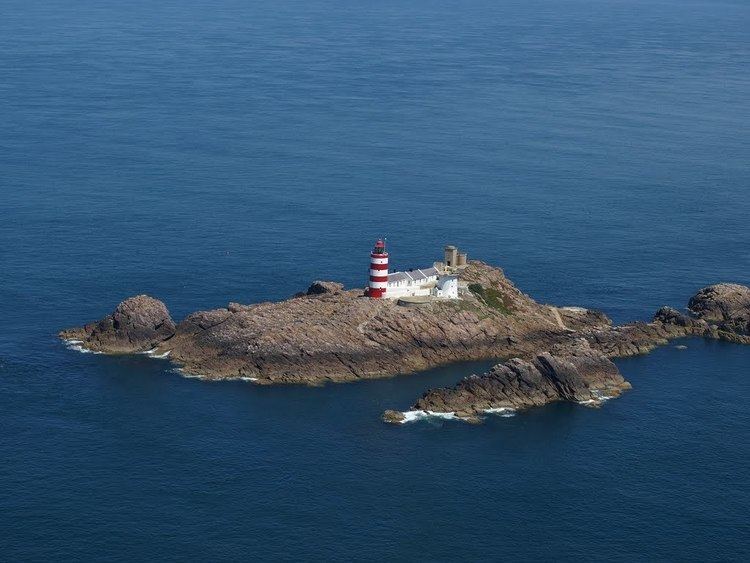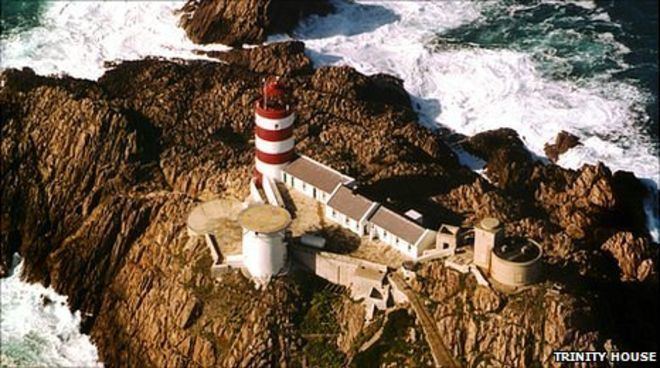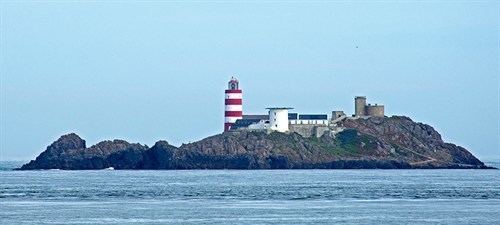Construction stone tower Height 23 m Automated 1990 | Focal height 37 m (121 ft) Opened 1724 Year first constructed 1724 | |
 | ||
Location Les CasquetsAlderneyChannel Islands Tower shape cylindrical tower with balcony and lantern Markings / pattern white and red horizontal bands, red lanten Similar Hilbre Island Lighthouse, Lynmouth Foreland Lighthouse, South Bishop Lighthouse, Alderney Lighthouse, Caldey Lighthouse | ||
Casquets Lighthouse is an active lighthouse located on the rocky Les Casquets, Alderney, Channel Islands.
Contents
History

Casquets Lighthouse is the latest in a series of three lights on Les Casquets. The first lighthouses started operation on 30 October 1724, and were three towers lit by coal fires called St Peter, St Thomas and the Dungeon. Three stone towers were built to give the lights a distinctive appearance which would not be confused with lighthouses in nearby France.

They were built by Thomas Le Cocq, owner of the rocks, under licence from Trinity House and who was paid a halfpenny per ton of ship when vessels passed the rocks and in turn he paid Trinity House 50 pounds per year for the right to run the lighthouses. The lighthouses reverted to Trinity House in 1785.
They were converted to oil lamps with metal reflectors which were first used on 25 November 1790; and upgraded again with apparatus to rotate a beam of light in 1818. This had a clockwork mechanism which was wound up every hour and a half and gave one flash every 15 seconds.

The lighthouses were badly damaged and the lanterns smashed in a severe storm on 31 October 1823. The towers were raised by a further 30 feet (10 m) in 1854, and equipped with 184 kilocandela lamps which gave three slow flashes every half minute. In 1877 the North West Tower was raised again and the lights in the other two towers discontinued.
Command raid

British commandos of the Small Scale Raiding Force made two raids during the Second World War on the lighthouse, following the German occupation of the Channel Islands in 1940. The first raid, Operation Dryad, took place on 2–3 September 1942 and the seven keepers were taken back to England as prisoners of war.
Electrification
Conversion to electric light took place in 1954, with the installation of a 2,830 kilocandela lamp. The lamp is unusual in that it rotates counter-clockwise. At the same time, the other two towers were reduced in height.
The current light in the 23 metres (75 ft) North West Tower is 37 metres (121 ft) above mean sea level and flashes five times every 30 seconds and with flashes 3.7 seconds apart. It can be seen for around 24 nautical miles (44 kilometres (27 mi) in clear weather. The East Tower contains the foghorn, which produces two blasts every 60 seconds and this has a nominal range of 3 nautical miles (5.6 km; 3.5 mi). Fog signal permanently discontinued from May 11, 2011. The South West Tower is topped with a helipad and there is another helipad on a flat section of the rock. The rocks are also marked using racon with a Morse letter T on radar displays. The lighthouse complex was automated in 1990 and is monitored and controlled from the Trinity House Operations Control Centre in Harwich.
